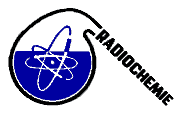Speaker
Dr
Dagmara Strumińska-Parulska
(University of Gdańsk)
Description
Phosphogypsum refers to the gypsum formed as a by-product of processing phosphate ore into fertilizer with sulfuric acid. They are radioactive due to the presence of naturally occurring uranium and radium in the phosphate ore and enriched in natural polonium 210Po, while the uranium radionuclides (234U and 238U) tend to be in waters around waste dump. The migration and distribution of uranium and polonium radionuclides in analyzed water samples are not uniform.
All analyzed phosphogypsum samples contained higher 210Po activity in comparison with uranium radionuclides.
The values of uranium and polonium concentration in water with immediate surroundings of waste heap are considerably higher than in the waters of the Martwa Wisła River. The activity ratio of 234U/238U is approximately about 1 in the phosphogypsum and between 0.92-9.99 in the water of retention reservoir and pumping station, while in the water from the Martwa Wisła River is slightly higher than 1. Polonium and uranium concentrations in water samples of the Martwa Wisła are relatively low in comparison with value in retention reservoir and pumping station near phosphogypsum waste heap. This suggests that radionuclides could be leached from dumping site to the surrounding environment.
The major source of polonium and uranium in plants is wet and dry atmospheric fall containing the soil and the air dust from the phosphogypsum waste dump and also accumulation through the root system. The highest uranium and polonium concentrations were found in older part of grasses (yellow oat-grass, meadow foxtail, moneywort), turned for atmospheric fall for a long time.
The authors would like to thank to the Ministry of Sciences and Informatics for the financial support under grant DS/8460-4-0176-10.
Primary author
Dr
Dagmara Boryło
(University of Gdańsk)
Co-authors
Prof.
Bogdan Skwarzec
(University of Gdańsk)
Dr
Dagmara Strumińska-Parulska
(University of Gdańsk)
Dr
Waldemar Nowicki
(University of Gdańsk)

